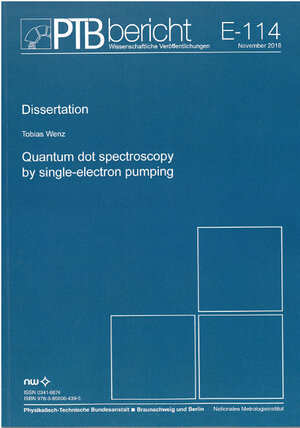
×
![Buchcover ISBN 9783956064395]()
Quantum dot spectroscopy by single-electron pumping
von Tobias WenzE-114: T. Wenz:
In silicon nanostructures, individual dopant atoms can form natural quantum dots with strongly localized potential wells. In this work, the coupling of a metallic quantum dot to the leads is controlled by dopant atoms. With this structure, a protocolfor single-electron pumping is introduced and examined. Its suitability for metrology applications is evaluated. Furthermore, pumping measurements enable investigation of the electrostatics in a region where conventional characterization fails.
GaAs-based tunable-barrier single-electron pumps are considered to be the most promising candidates for metrology applications. In this work, the dynamic loading of electrons into the quantum dot is studied close to the Fermi edge. The measurementsare analyzed using a rate-equation model and reveal the inner structure of the quantum dot. It is shown that loading into excited orbital states and subsequent fast orbital relaxation is vital for single-electron capture. For the loading of electron pairs, no relaxation is observed between specific states, which is attributed to the slow timescales of singlet-triplet spin relaxation.
In silicon nanostructures, individual dopant atoms can form natural quantum dots with strongly localized potential wells. In this work, the coupling of a metallic quantum dot to the leads is controlled by dopant atoms. With this structure, a protocolfor single-electron pumping is introduced and examined. Its suitability for metrology applications is evaluated. Furthermore, pumping measurements enable investigation of the electrostatics in a region where conventional characterization fails.
GaAs-based tunable-barrier single-electron pumps are considered to be the most promising candidates for metrology applications. In this work, the dynamic loading of electrons into the quantum dot is studied close to the Fermi edge. The measurementsare analyzed using a rate-equation model and reveal the inner structure of the quantum dot. It is shown that loading into excited orbital states and subsequent fast orbital relaxation is vital for single-electron capture. For the loading of electron pairs, no relaxation is observed between specific states, which is attributed to the slow timescales of singlet-triplet spin relaxation.


